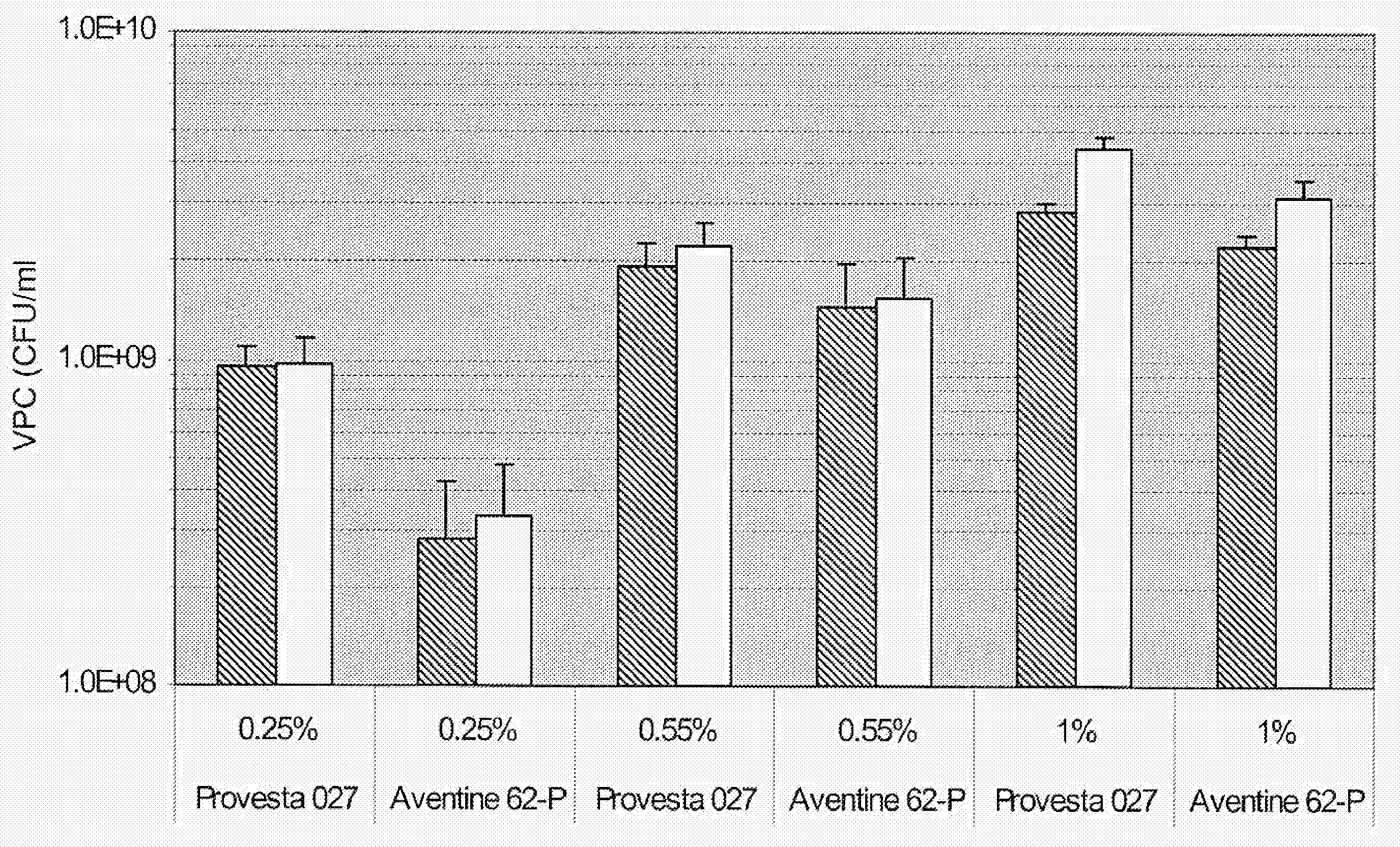Composition comprising enzymatically digested yeast cells and method of preparing same
a technology of enzymatic digestion and yeast cells, which is applied in the field of fermentation media, can solve the problems of insoluble components that are not used, and achieve the effects of increasing the biomass yield of microbial cells, new nutritional and functional characteristics, and enhancing biomass yield
- Summary
- Abstract
- Description
- Claims
- Application Information
AI Technical Summary
Benefits of technology
Problems solved by technology
Method used
Image
Examples
example 1
Enzymatic Digestion of Yeast Sources
[0107]Suspensions of two different yeast sources (see Table 1) were prepared in water at a 10% (w / w) concentration for a final volume of 300 ml. The suspensions were heated to 90° C. for 20 min, then cooled to about 50° C. The pH was adjusted to the values indicated in Table 3 before dividing into 12 ml portions. Different enzymes (see table 2) were then added to the suspensions. Each yeast suspension was treated with the lysing enzyme Amano YL-NL and the proteolytic enzymes Protease N (Amano) and Alcalase at the enzyme concentrations, times, pH and temperatures indicated in table 3. In some cases a second enzyme digestion step was carried-out as indicated in table 3. After digestion, the samples were rapidly cooled on ice until analyzed for their amino-nitrogen (AN) content. The AN / TN ratio was calculated using a TN value that was determined previously for the 10% solution for each yeast source, assuming that the TN value does not change during d...
example 2
Growth of Lactobacillus acidophilus La-5 on a Yeast Digest Based Medium
Materials & Methods
Microorganisms and Inoculum Preparation
[0108]Lactobacillus acidophilus La-5 (commercially available) was obtained from the Chr. Hansen Culture Collection (CHCC3777). The inoculum was prepared in MRS medium. Two 10-hour serial transfers, maintained anaerobically with the GasPak Plus system at 37° C. using a transfer volume of 0.7% (v / v) were conducted. The fermenters were inoculated with 0.7% (v / v) of the final culture.
Culture Media
[0109]An 10% (w / w) aqueous suspension of the yeast source (Aventine 62-P or Provesta 027) was prepared. The suspension was heated to 90° C. for 20 min. After that period, the temperature and pH value were adjusted and controlled, the specific enzyme(s) were added and the digestion was carried-out. Optionally, the digestion was completed by the addition of a second enzyme followed by a second digestion period. The resulting suspension is referred to as “yeast digest”.
[...
example 3
Small-Scale Production of Freeze-Dried Pellets of La-5 in a Digested Yeast Based Medium
[0118]A fermentation was carried-out in triplicate using Provesta 027 digested with Alcalase from Novozymes (0.11 U / g) and a the 5′-ribonuclease with the additional yeast extracts Biospringer 232 and Flavormate 957 (0.55% each). FIG. 4 shows the growth curves for La-5. The average final viable cell count reaches a high value of 2.25·109±5.16·108 CFU / ml.
[0119]After fermentation the fermentate was concentrated by centrifugation 14-times, a commercially used cryoprotectant was added to the concentrate at an inclusion rate of 14.5% and the pellet was resuspended by agitation. The final suspension was then dropped into liquid nitrogen, the frozen pellets were harvested and kept at −70° C., and subsequently freeze-dried. Viable cell counts for the pre-freeze-dried (PFD) and freeze-dried (FD) pellets were 6·109 and 8.5·1010 CFU / ml, respectively.
PUM
| Property | Measurement | Unit |
|---|---|---|
| temperatures | aaaaa | aaaaa |
| temperatures | aaaaa | aaaaa |
| volume | aaaaa | aaaaa |
Abstract
Description
Claims
Application Information
 Login to View More
Login to View More - R&D
- Intellectual Property
- Life Sciences
- Materials
- Tech Scout
- Unparalleled Data Quality
- Higher Quality Content
- 60% Fewer Hallucinations
Browse by: Latest US Patents, China's latest patents, Technical Efficacy Thesaurus, Application Domain, Technology Topic, Popular Technical Reports.
© 2025 PatSnap. All rights reserved.Legal|Privacy policy|Modern Slavery Act Transparency Statement|Sitemap|About US| Contact US: help@patsnap.com



